Our data is telling an alarming story - driving is more dangerous than ever. We have reported in the past how driving behavior changed during the pandemic, leading to a spike in fatal accidents. Today, with an increase in bodily injury claims, more severe injuries, and a continued rise in traffic-related deaths, it is clear that what was hoped to be a temporary trend may be the new norm.
With the increased dangers of driving, it is paramount for insurance carriers and auto manufacturers to prioritize technology and services that look out for the well-being of their customers. While driving behaviors remain a problem, there are other factors behind this unfortunate new reality that are adding to the uptick.
Below are four factors that drive the need for vehicular customer safety:
1) Bigger vehicles lead to bigger accidents
A car accident is inherently dangerous, but when you add larger, heavier vehicles, the potential for danger increases tremendously. Over the past 30 years, pickup trucks and SUVs have become more and more popular in the US - they’ve also gotten heavier and more powerful.
In 2022, 8 of the 10 highest selling vehicles were pickups and SUVs. These vehicle types increased in weight by 32% and 7% respectively since 1990.
HEavier and more powerful vehicles create a potentially lethal combination
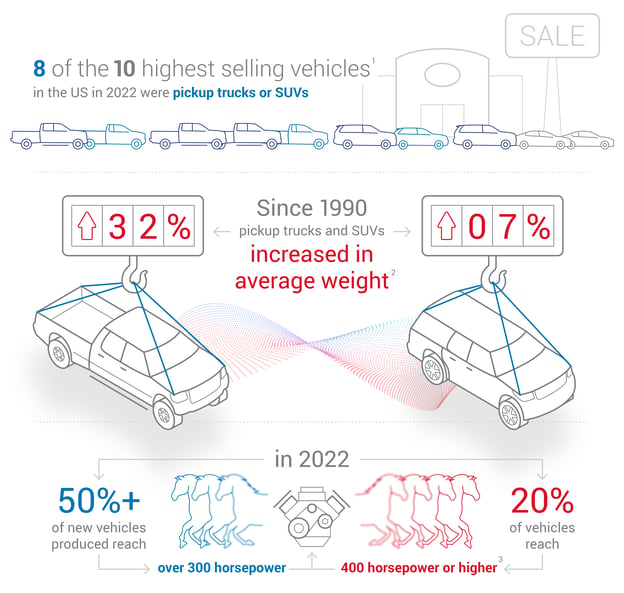
A vehicle’s weight isn’t the only issue, it is also significant increases in power - 50% of new vehicles produced in 2022 reach over 300 horsepower. The combination of power and size results in a more dangerous collision. To make matters worse, many drivers are going faster than ever before…
2) Speeding levels accelerate the rise in traffic fatalities
When the pandemic first started, there were far fewer vehicles on the road, which led to people driving faster and more recklessly. Now that we are post-pandemic, that trend hasn’t changed, even though traffic patterns have returned to normal. In fact, 50% of the time drivers are going over the speed limit by at least 10 MPH. On the freeway, 12% drivers reported going 15 MPH over the speed limit. When considering that 30% of states have a max speed limit of 75+, those speeds are reaching 80-95+, and that’s just what people are willing to report!
As a result, fatal crashes resulting from speeding increased 17% from 2019 to 2020.
Speeding levels are higher than pre-pandemic
in 2020...
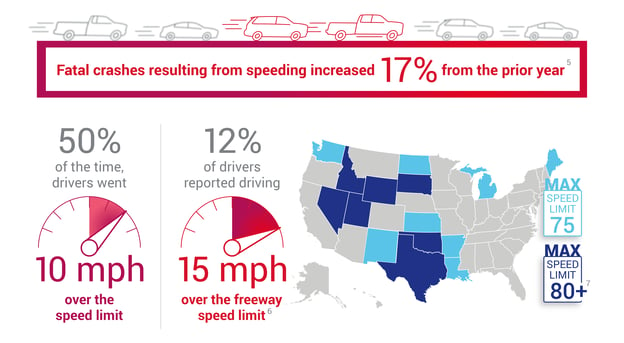
3) Distractions are safety detractions
When operating a motor vehicle, it’s imperative to maintain focus and keep your eyes on the road. Unfortunately, the majority of drivers engage in distracted driving that can lead to more car accidents. According to the Insurance Institute for Highway Safety, 65% of people drive while distracted.
Moreover, those who drive the most are also those who most regularly engage in distracted driving. When a driver is not giving 100% of their attention to the road, they are more likely to miss a turn signal, brake lights, or stop lights - in fact, 1 in 10 drivers have reported running a red light.
Drivers themselves are making roads more dangerous

4) Driving under the influence is trending in the wrong direction
Perhaps the most dangerous trend on the road today is the uptick in driving under the influence, with nearly 1 in 4 drivers having driven over the legal drinking limit in 2021. With more people driving under the influence, 2021 also reached a 15-year high for most traffic deaths involving drunk drivers.
These stats are staggering and remind us that even safe driving and preventative technologies can’t always protect us from the dangers of a drunk driver.
What’s more, the legalization and decriminalization of marijuana is leading to more people driving under the influence of cannabis. Fourteen percent of people reported having driven within an hour of cannabis consumption.
Driving under the influence is a growing concern
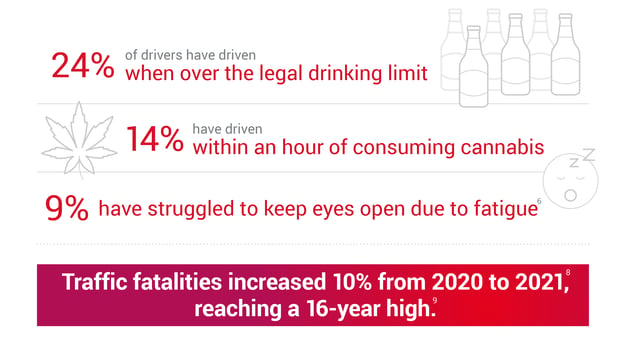
Did you know?
While not considered “under the influence” driving while tired is often considered to be just as dangerous. We have all done it, and we are not alone. In fact, 9% of drivers cite struggling to stay awake behind the wheel.
What can be done about it?
With so many factors contributing to the rise in traffic fatalities, it begs the question: how can we in the auto-related industries work together to improve roadway safety? While Advanced Driver Assistance Systems (ADAS) are intended to provide added safety measures to vehicles, they aren’t all equally effective, nor do they address driver behavior. These technologies are an important component of solving this challenge, but can not work alone.
Every second counts for accident victims
To address the inevitability of auto accidents, enabling immediate emergency support for those involved needs to be a significant piece of the puzzle. Using telematics (whether built into the vehicle itself or included on a driver’s smartphone), can enable an instant notification to get emergency services to the accident scene. When every second matters, an instant alert can be a life-saving enabler for faster EMS response.
Showing customers that you care and providing life-saving support also creates a sense of security and earns their appreciation and affinity. With 83% of telematics customers as promoters of the service, it’s easy to see that people appreciate having someone looking out for them in their time of need.
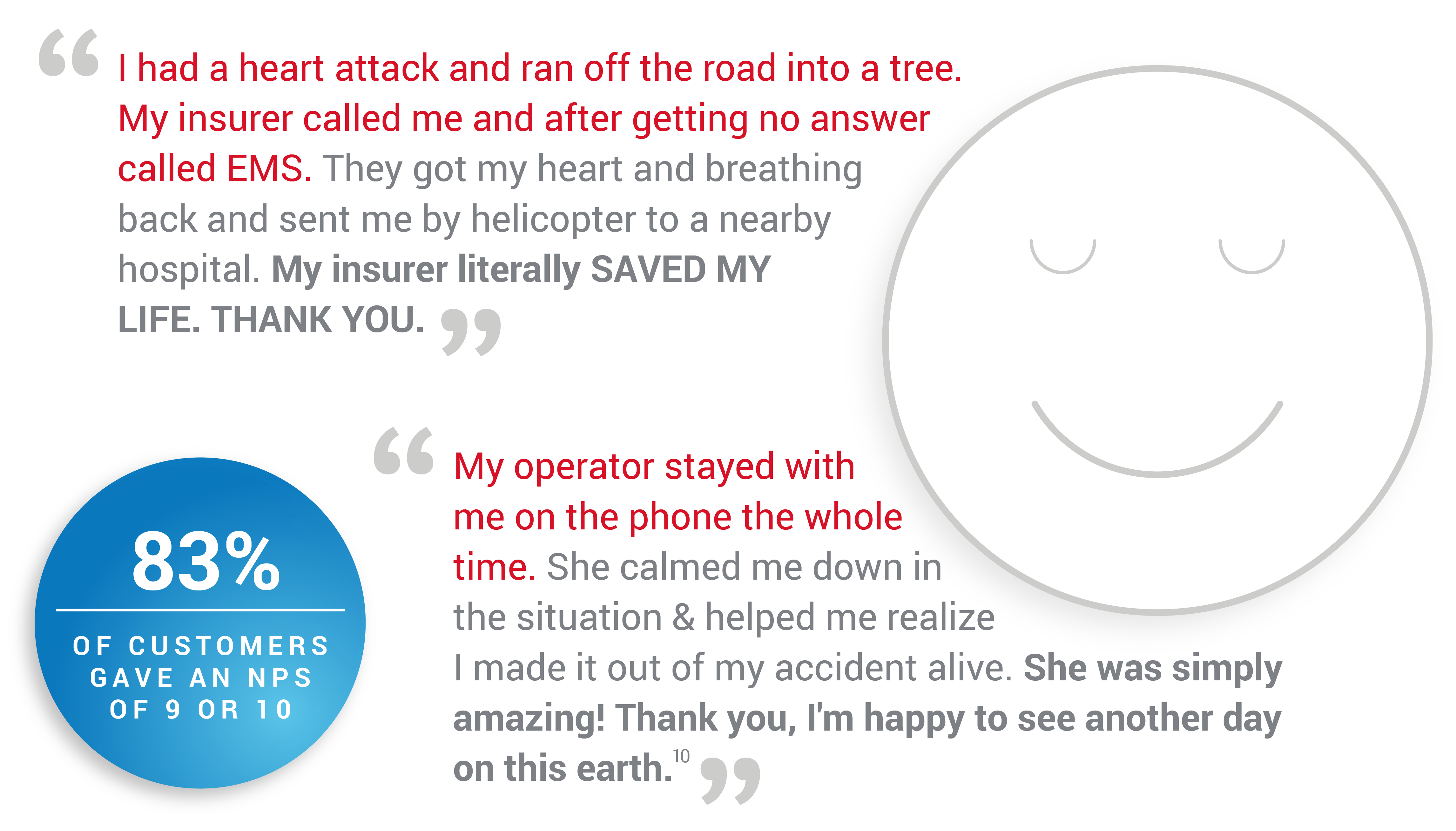
While we all love to enjoy the ride, it is our responsibility as vendors, carriers, and manufacturers to do everything in our power to ensure and promote roadway safety. Let’s work together to address this issue and make the road ahead a safer place for everyone.
Download the infographic here!

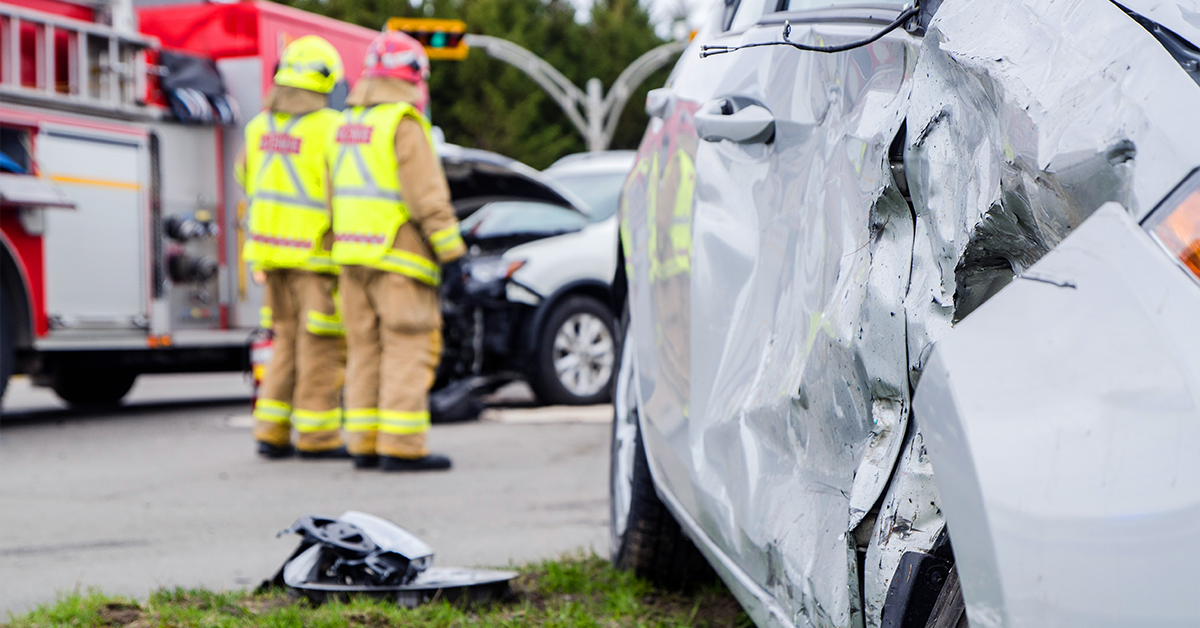





 As Product Marketing Manager for the Accident Management line of business, Jake Wright is responsible for positioning, marketing, and go-to-market activities for Agero’s accident management products. Prior to joining Agero, Jake built and supported marketing initiatives in industries ranging from craft brewing, to telecommunications, to oil and energy. His experience in Product Marketing stems from a passion for learning and using creative problem solving to market complex products. Based in Boston, Jake is an avid sports fan who enjoys traveling, golfing, and skiing. Jake has a BS in Business Administration from Plymouth State University.
As Product Marketing Manager for the Accident Management line of business, Jake Wright is responsible for positioning, marketing, and go-to-market activities for Agero’s accident management products. Prior to joining Agero, Jake built and supported marketing initiatives in industries ranging from craft brewing, to telecommunications, to oil and energy. His experience in Product Marketing stems from a passion for learning and using creative problem solving to market complex products. Based in Boston, Jake is an avid sports fan who enjoys traveling, golfing, and skiing. Jake has a BS in Business Administration from Plymouth State University.